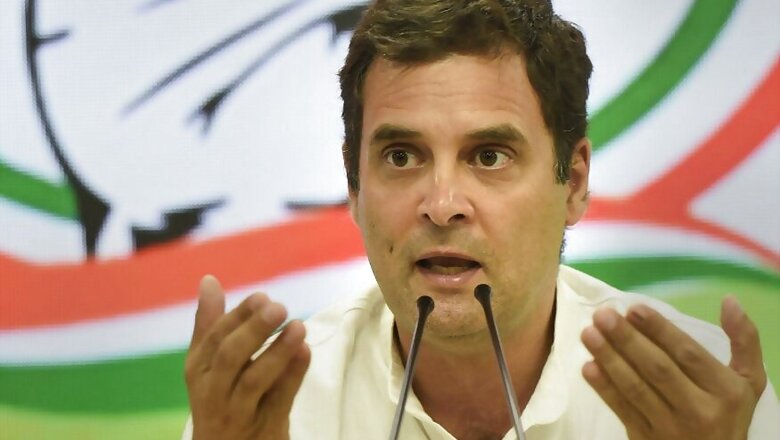
views
If Rahul Gandhi indeed relinquishes office of the Congress president and remains as a Member of Parliament, the grand old party may see a tussle of another kind — between the parliamentary wing of the party and the organisation, i.e. the All India Congress Committee (AICC).
The Congress has had a chequered history in maintaining cordial relations between its organisational and parliamentary wings. When Mohammad Ali Jinnah was in the Congress, he had no admiration for the Congress high command and often compared it to the Fascist Grand Council.
The dual power centres within the party and the Congress Party in Parliament (CPP) has led to confrontation. Before the independence, the real source of power lay in the organisation but the Congress then was a movement rather than a political outfit. After 1947, when the Congress became a ruling party under Prime Minister Jawaharlal Nehru, the then AICC chief Acharya Kriplani tried to force Nehru to consult before taking crucial administrative decisions.
Nehru, who had a towering personality, chose to ignore Kripalani to ‘guide and advice’ the government and the tail could not wag the dog. Nehru confronted another AICC chief Purushottam Das Tandon. who had become party chief in 1952 and was known for his soft Hindutva views.
Nehru humbled Tandon by asking the entire CWC to hand over resignations and ensured that Tandon would not dare to challenge him.
Nehru’s daughter, Indira, too had several rounds of confrontation with the party leadership. She was appointed prime minister by party bosses K Kamaraj and S Nijalingappa after Lal Bahadur Shastri died in office. But when the power Congress syndicate tried to dictate terms to the prime minister, she ensured there would not be a place for them in the party. Since the Indira era, the party president has played second fiddle to the person occupying the top seat in the government.
While the tussle was settled in favour of the former during the tenures of Nehru to the Rajiv Gandhi era, it fell to Sonia Gandhi to reverse the equation in 1998 when she took over as party chief. Her party managers worked on a strategy to ensure that she had the authority to appoint the leader of the House in the Lok Sabha and Rajya Sabha even though she was not even an MP. Pranab Mukherjee, who had been a man of all seasons, had offered a remedy to ensure Sonia’s authority over the parliamentary wing continued undiluted even though a new leader was elected as the CPP leader.
In May 2004, Sonia had appointed two leaders as CPP leaders in Lok Sabha and Rajya Sabha. She had named Manmohan Singh as leader of the House in the Rajya Sabha and Mukherjee as leader of the House in the Lok Sabha. Singh was, by then, sworn as prime minister too.
Under the CPP constitution, its leader’s post was the highest but Clause 5 of the party constitution was amended to create the chairperson’s post. Under sub-clause ‘C,’ the chairperson and not the CPP leader would nominate the party leaders in both houses as well as the deputy leaders and chief whips. The amended clause now reads: “The chairperson shall have the authority to name the leader of the CPP to head the government, if necessary.”
So, if Rahul replaces Sonia as CPP chairperson, he will have the authority to appoint leaders in the Lok Sabha and Rajya Sabha and not the AICC chief. Alternatively, Sonia, as CPP chairperson, can nominate Rahul as leader of the House in the Lok Sabha, a post that was held by Mallikarjuna Kharge in the 16th Lok Sabha.
(Rasheed Kidwai is a Visiting Fellow with the Observer Research Foundation. Views are personal)


















Comments
0 comment